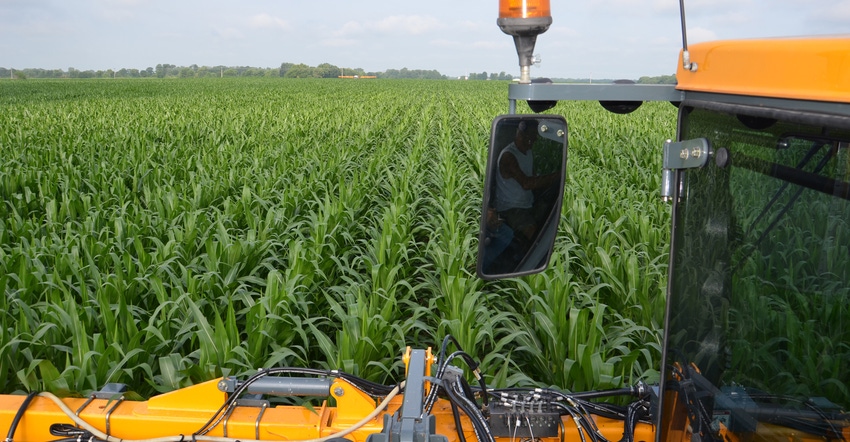
When implemented correctly, on-farm trials are not only doable, but also can be a rewarding way for growers to learn and improve profitability. “That’s the bottom line of on-farm research today,” says Bob Nielsen, Purdue University Extension corn specialist. ‘It helps us as researchers gather data faster to make recommendations, and it can help farmers learn too.”
Since 2006, Nielsen and Jim Camberato, also a Purdue Extension agronomist, cooperated on over 400 field-scale, on-farm trials on nitrogen rates and timing, population trials, starter fertilizer, sulfur comparisons, and more. Those include trials at Purdue’s ag centers. They’ve completed trials in roughly half of all counties in Indiana.
10 tips
Maybe you’re interested in on-farm testing. Here are 10 tips to help you learn more:
1. Clearly define question. What are you trying to learn? Maybe it’s as simple as if your corn responds to sulfur. “Farmers may think we’re nitpicking when we talk about the scientific method, but if you want valid answers, it’s necessary,” Nielsen says. “It starts with knowing exactly what you’re trying to learn.”
2. Develop a hypothesis. Maybe you don’t think sulfur will pay. “Then that’s your hypothesis,” Nielsen says. “Put together a solid plan to determine if it’s true or not.”
3. Replicate trial at least three times. To get answers, you must generate data. To get reliable data that someone can analyze with statistics, repeat the same comparisons in the same field, preferably at least three times. Soils and micro-environments vary. Replication helps you know if yield differences are due to what you’re comparing, or just natural variability.
4. Place treatments randomly within each replication. Maybe the highest rate of sulfur is the first strip in the first replication, second in the second rep and fourth in the third rep. “Placing strips at random helps take out more variability,” Nielsen says.
5. Rely on variable-rate technology. If you have variable-rate capability, someone can program in the rates for each strip in a prescription. You simply drive the field, and the computer adjusts rates.
6. Rely on autosteer if necessary. If you don’t have variable-rate capability, you can minimize disruption to your routine by planting all passes of each treatment first, one within each replication, before manually switching rates or products.
7. Use full-length passes. Field length varies from 1,300 to 2,600 feet in trials that the Purdue pair have done. Let passes run the length of the field.
8. Match pass width with harvesting equipment. It works great if each treatment pass is twice the width of a combine pass, Nielsen says. Then you can harvest half the center of the plot, and let in-between passes be bulk harvest.
9. Recognize need to test again. One year’s testing in one field provides clues. To have better answers, you need multiple years of testing in many locations. That helps determine whether the crop responds consistently to treatments.
10. Collect and analyze data. Yield monitors with GPS make data collection possible. “Then you need GIS software to clean up the data, removing factors not related to the test, like droughty areas, and make valid comparisons,” Nielsen explains.
That’s a skill Nielsen and Camberato provide for participating growers. They also give cooperators the first look at the results and what they learned. If you’re interested in becoming an on-farm cooperator, contact Nielsen at [email protected].
About the Author(s)
You May Also Like




